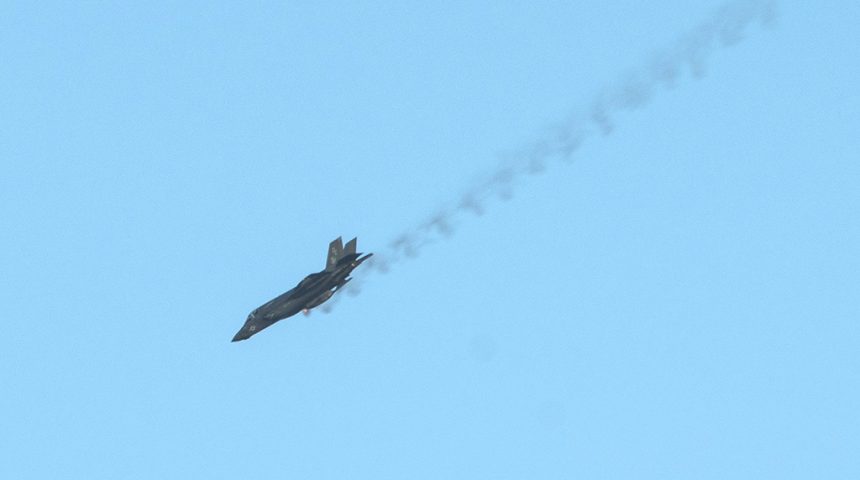The F-35B was damaged by the explosion of the ammunition round leaving the aircraft’s GAU-22 gun pod during a nighttime mission out of Marine Corps Air Station Yuma, Arizona.
An F-35B with VMX-1, the U.S. Marine Corps’ test and evaluation squadron based at MCAS (Marine Corps Air Station) Yuma, Arizona, was damaged during a night CAS (Close Air Support) mission on Mar. 12, 2021. According to Military.com’s Oriana Pawlyk, who was the first to report about the mishap, the F-35B was operating over the Yuma Range Complex, when a PGU-32/U Semi-Armor Piercing High Explosive Incendiary-Tracer (SAPHEI-T) 25mm round exploded after leaving the fighter’s GAU-22 gun pod [the GAU-22 gun is actually installed inside a Gun Pod Unit (GPU) – 9/A; however, the pod itself is often referred to as “GAU-22 gun pod” by the service too].
The aircraft landed safely and the mishap did not result in any injury to personnel, however, it was given the most severe classification, Class A, which means a damage of at least 2.5M USD or the loss of the airframe.
An investigation is ongoing and, at present, it’s not even clear whether the round was fired deliberately.
The F-35B’s General Dynamics GAU-22 25mm uses a unique four-barrel configuration that was developed from the highly successful five-barrel, 25mm GAU-12/U gun also built by General Dynamics.
As often highlighted, although the GAU-22 gun pod was designed with LO (Low Observability) characteristics, the external pod unit degrades the F-35B’s radar cross section making the 5th generation aircraft more visibile to radars. Still, this is acceptable (as it is for the non-stealthy AV-8B Harrier jets they will replace) for the scenarios where the U.S. Marine Corps F-35B jets are called to carry out CAS missions (read here about the so-called “third day of war” configuration) in permissive airspace.
On-call CAS may require the combat aircraft to use the gun to perform a strafing pass and lighten pressure on the friendly forces, or use PGMs to destroy insurgent vehicles or compounds. When needed CAS assets can perform the so-called “show of presence” or “show of force”. We discussed the differences between the two in this article.
Commenting the news of the F-35B was damaged by its own ammunition round, some people have compared the latest stealth aircraft’s mishap with the bizarre incident that occurred on September 21, 1956, when a U.S. Navy Grumman F-11F Tiger collided with its own 20mm cannon shells in flight. That aircraft was completely destroyed in the incident and the pilot was wounded. But that appears to be a completely different story: in that case, the Tiger started a strafing run at 20,000ft, 20 degrees nose-down. At 13,000ft, the pilot fired a four-second cannon burst, then advanced the throttle to afterburner, steepened his descent, and fired a second burst. Three bullets hit the aircraft at lower level, one of those damaged the engine.
There have been other bizarre incidents with aircraft ordnance in the last years. In November, 2013, we reported that a Dutch F-16 accidentally strafed a range control tower on the Vliehors Range, just one of a series of similar incidents on the range. In October, 2018, a Belgian Air Force F-16 accidentally fired its M61A1 cannon while parked for maintenance at Florennes Air Base in the Walloon area of Southern Belgium and destroyed another Viper parked nearby. In August 2018 a Spanish Air Force Eurofighter accidentally fired an AIM-120 AMRAAM near the city of Otepää in Estonia, only 50 km west of the Russian border.









